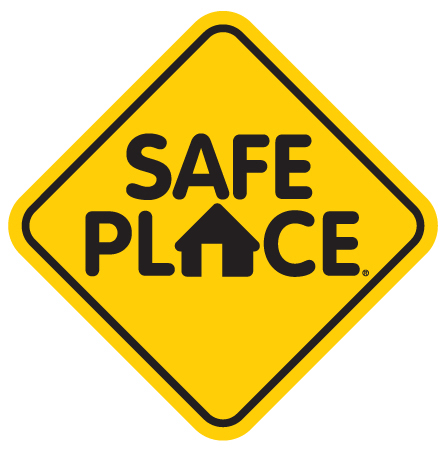Lesbian, Gay, Bisexual, Transgender, and Questioning (LGBTQ) YouthAll youth coming to a Safe Place site are to be treated with the same care and concern. There is not a separate designation to identify "LGBTQ friendly" sites as Safe Place provides an outlet to safety for all young people in crisis. Safe Place communities are full of accepting, compassionate, and supportive providers who care about the safety and success of young people. If you are a young person in need of immediate help and safety, no matter your race, ethnicity, religion, gender, sexual orientation, or any other way you identify yourself, you may go to any location with this sign to receive help.
LGBTQ youth have particular circumstances in their lives that may make them more likely to need Safe Place help. While Safe Place site personnel are unlikely to be aware of, or involved in, a conversation with a youth involving issues of sexuality, it is important to have some knowledge and awareness. Below you’ll find some basic information about LGBTQ youth. Sexual orientation refers to a person’s physical and/or romantic attractions to other people. A person who identifies as heterosexual or straight is attracted to people of a different gender. A person who identifies as gay or lesbian is attracted to people of the same gender. Some people identify as bisexual or another orientation which reflects attraction to people of more than one gender. Gender identity is different from sexual orientation. It refers to a person’s inner sense of their own gender. For many people, their biological sex (anatomy) and their gender identity are the same. This is referred to as being cisgender. Biological sex and gender identity may also be different. A person who identifies as transgender is one whose inner sense of their gender differs from the anatomy with which they were born. Transgender people, like cisgender people, can have any sexual orientation. The most important thing to remember about LGBTQ youth is that labels only matter when a youth identifies with them. However a young person expresses their identity, if they are coming to a Safe Place for help, they are trusting the adults there to help them without judgment. LGBTQ youth face increased adversity. Many tend to think of families and schools as the safest places for youth. Sadly for LGBTQ youth, this is often not the case. Due to their gender identity or sexual orientation, they face increased amounts of family rejection, abuse, and bullying. This causes LGBTQ youth to be at greater risk for homelessness, sexual abuse, depression, and suicide. While it is estimated that LGBTQ persons make up less than 10% of the total population, a disproportionate 20-40% of the homeless youth population identify as LGBTQ. Like other youth, LGBTQ youth become homeless for a variety of reasons. Among the most commonly cited are: family rejection, violence and abuse in the home, and aging out of state systems of care without adequate support. Below are some suggested guidelines to assist your site in making an LGBTQ youth feel safe:
The following resources are also available for youth, families, and providers. For Youth Information
Connection
For Families Information
Connection
For Providers Information
Connection
|





